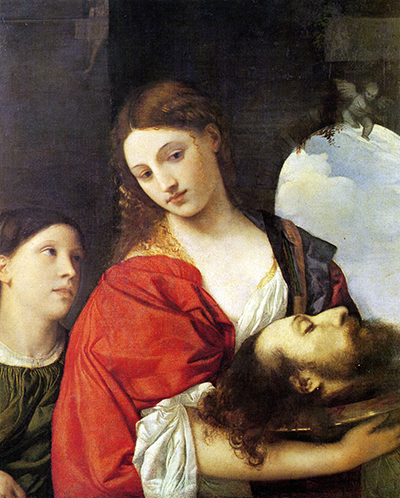Salome is the name that many have given to this powerful Titian artwork, but many believe it to ultimately be a personal depiction of Judith with the Head of Holofernes
There is also a considerable amount of support to the idea that it actually depicts Salome with the head of John the Baptist, hence why many still refer to the painting simply as Salome. One pleasing element to this work is that it's creator is never doubted, it is fully accepted as that of Titian.
That said, some had originally attributed this painting to Giorgione, an artist who undoubtably influenced Titian throughout his career. There are clearly elements which point to Giorgione's style but all that really underlines is that Titian was indeed an artist who took elements of his style into his own.
This painting, which can now be found at the Galleria Doria Pamphilj in Rome, has one of the more confident dates attributed to it, with most historians happy to place it at around 1515. This is in contrast to many of Titian's other paintings as well as other members of the Italian and Northern Renaissance periods. See also Albrecht Durer for how loose some artwork dates remain.
Titian attempted to put together his idea of the perfect female form within this painting, and would use all of his skills in colour to deliver a wide ranging palette. He would incorporate various tones of red, green and white in order to bring this portrait to life.
Whilst there is still no clear decision over whether this painting is Salome with the head of the Baptist, or Judith with the head of Holofernes, there can certainly be no doubt as to who produced the finest and most respected depiction of Judith with the head of Holofernes, with that being Caravaggio.
Considerable research has been carried out on the career of Titian in general, and one interesting item was the collection of Alfonso I d'Este which lists a depiction of Judith by the artist as early as 1533. It is hard to imagine any more information being discovered today that would sufficiently close this argument.




